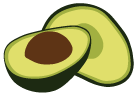GraphRAG
ArangoDB’s GraphRAG solution combines graph-based retrieval-augmented generation with Large Language Models (LLMs) for turbocharged GenAI solutions
ArangoDB Platform
Introduction
Large language models (LLMs) and knowledge graphs are two prominent and contrasting concepts, each possessing unique characteristics and functionalities that significantly impact the methods we employ to extract valuable insights from constantly expanding and complex datasets.
LLMs, such as those powering OpenAI’s ChatGPT, represent a class of powerful language transformers. These models leverage advanced neural networks to exhibit a remarkable proficiency in understanding, generating, and participating in contextually-aware conversations.
On the other hand, knowledge graphs contain carefully structured data and are designed to capture intricate relationships among discrete and seemingly unrelated information.
ArangoDB’s unique capabilities and flexible integration of knowledge graphs and LLMs provide a powerful and efficient solution for anyone seeking to extract valuable insights from diverse datasets.
The GraphRAG component of the GenAI Suite brings all the capabilities together with an easy-to-use interface, so you can make the knowledge accessible to your organization.
GraphRAG is particularly valuable for use cases like the following:
- Applications requiring in-depth knowledge retrieval
- Contextual question answering
- Reasoning over interconnected information
How GraphRAG works
ArangoDB’s GraphRAG solution democratizes the creation and usage of knowledge graphs with a unique combination of vector search, graphs, and LLMs (privately or publicly hosted) in a single product.
The overall workflow involves the following steps:
- Chunking:
- Breaking down raw documents into text chunks
- Entity and relation extraction for Knowledge Graph construction:
- LLM-assisted description of entities and relations
- Entities get inserted as nodes with embeddings
- Relations get inserted as edges, these include: entity-entity, entity-chunk, chunk-document
- Topology-based clustering into mini-topics (called communities):
- Each entity points to its community
- Each community points to its higher-level community, if available (mini-topics point to major topics)
- LLM-assisted community summarization:
- Community summarization is based on all information available about each topic
Turn text files into a Knowledge Graph
The Importer service is the entry point of the GraphRAG pipeline. It takes a raw text file as input, processes it using an LLM to extract entities and relationships, and generates a Knowledge Graph. The Knowledge Graph is then stored in an ArangoDB database for further use. The Knowledge Graph represents information in a structured graph format, allowing efficient querying and retrieval.
- Pre-process the raw text file to identify entities and their relationships.
- Use LLMs to infer connections and context, enriching the Knowledge Graph.
- Store the generated Knowledge Graph in the database for retrieval and reasoning.
For detailed information about the service, see the Importer service documentation.
Extract information from the Knowledge Graph
The Retriever service enables intelligent search and retrieval of information from your previously created Knowledge Graph. You can extract information from Knowledge Graphs using two distinct methods:
- Global retrieval
- Local retrieval
For detailed information about the service, see the Retriever service documentation.
Global retrieval
Global retrieval focuses on:
- Extracting information from the entire Knowledge Graph, regardless of specific contexts or constraints.
- Provides a comprehensive overview and answers queries that span across multiple entities and relationships in the graph.
Use cases:
- Answering broad questions that require a holistic understanding of the Knowledge Graph.
- Aggregating information from diverse parts of the Knowledge Graph for high-level insights.
Example query:
Global retrieval can answer questions like What are the main themes or topics covered in the document?
During import, the entire Knowledge Graph is analyzed to identify and summarize the dominant entities, their relationships, and associated themes. Global retrieval uses these community summaries to answer questions from different perspectives, then the information gets aggregated into the final response.
Local retrieval
Local retrieval is a more focused approach for:
- Queries that are constrained to specific subgraphs or contextual clusters within the Knowledge Graph.
- Targeted and precise information extraction, often using localized sections of the Knowledge Graph.
Use cases:
- Answering detailed questions about a specific entity or a related group of entities.
- Retrieving information relevant to a particular topic or section in the Knowledge Graph.
Example query:
Local retrieval can answer questions like What is the relationship between entity X and entity Y?
Local queries use hybrid search (semantic and lexical) over the Entities collection, and then it expands that subgraph over related entities, relations (and its LLM-generated verbal descriptions), text chunks, and communities.
Private LLMs
If you’re working in an air-gapped environment or need to keep your data private, you can use the private LLM mode with Triton Inference Server.
This option allows you to run the service completely within your own infrastructure. The Triton Inference Server is a crucial component when running in private LLM mode. It serves as the backbone for running your language (LLM) and embedding models on your own machines, ensuring your data never leaves your infrastructure. The server handles all the complex model operations, from processing text to generating embeddings, and provides both HTTP and gRPC interfaces for communication.
Public LLMs
Alternatively, if you prefer a simpler setup and don’t have specific privacy requirements, you can use the public LLM mode. This option connects to cloud-based services like OpenAI’s models via the OpenAI API or a large array of models (Gemini, Anthropic, publicly hosted open-source models, etc.) via the OpenRouter option.
Limitations
The pre-release version of ArangoDB GraphRAG has the following limitations:
- You can only import a single file.
- The knowledge graph generated from the file is imported into a named graph
with a fixed name of
KnowledgeGraphand set of collections which also have fixed names.

